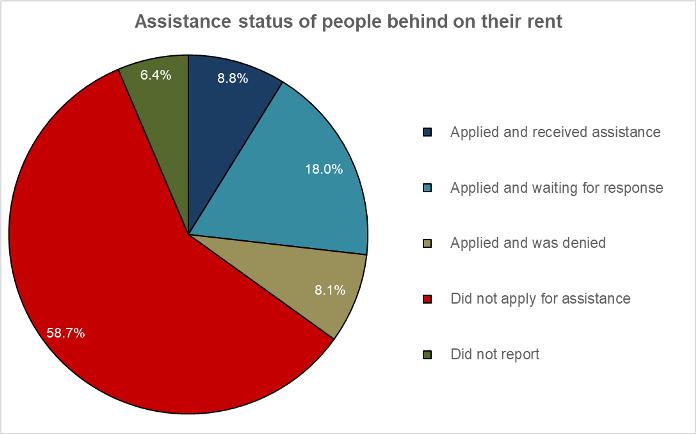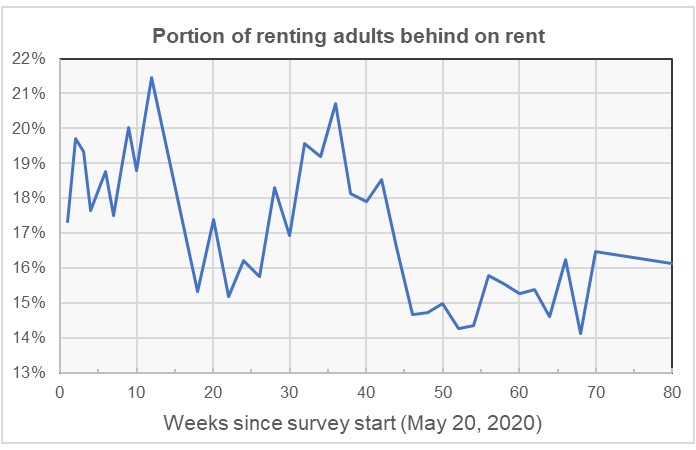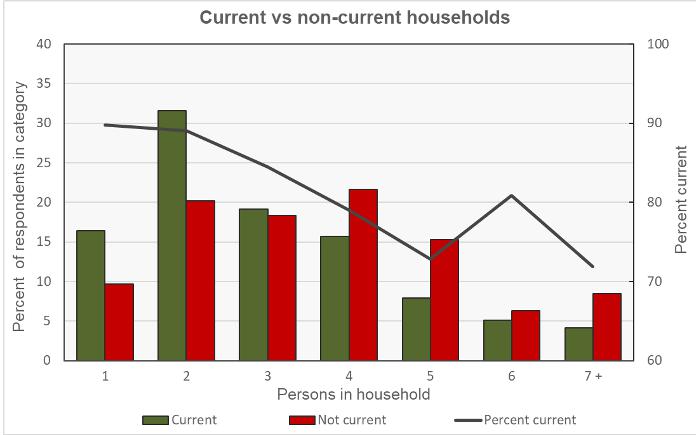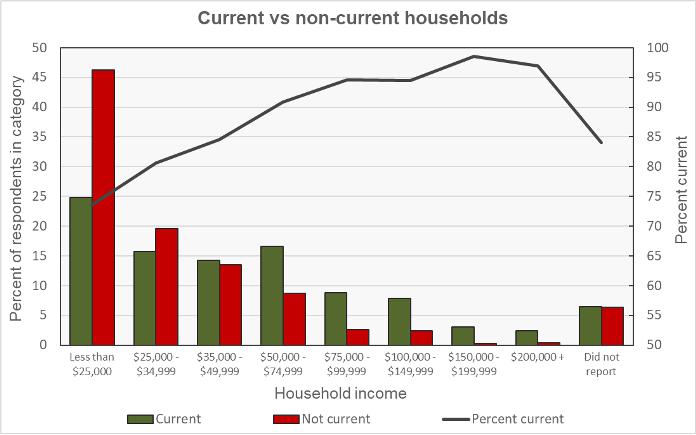The “Week 40” edition of the Census Bureau’s Pulse Survey has been released. It shows that the portion of renters with rent delinquencies is nearly unchanged since we last reported on this survey.
What is the Pulse Survey?
The Pulse Survey is an experimental program that the Census Bureau has been running to assess how the population of the country is reacting to the fallout from COVID-19. The current survey, designated Week 40, is the first of what Census calls Phase 3.3 of the survey. With each new phase of the survey, the questions that are asked of respondents are revised, usually to gather more detail on some point of interest to the survey designers. The rental housing portion of the Phase 3.3 version of the survey gathers more information about renters seeking to access rental assistance through their state or local government.
The Week 40 survey collected data from December 1 to December 13. The renter portion of the survey covers renters of both multifamily and of single-family properties.
Seeking help
The new question on seeking government assistance in paying the rent yielded some interesting results. One is that 29 percent of those who applied for and received assistance are still behind on their rent. Another is that at least 59 percent of those who are behind on their rent have not applied for assistance. Yet another is that, despite the rental assistance programs being authorized many months ago, 39 percent of those who applied for assistance are still waiting for a response to their request. The status of assistance applications from those who are behind on their rent is shown in the first chart, below.

Tracking delinquencies
A key question for renters which has been asked in all phases of the survey is whether they are behind on their rent. While some say that they occupy their housing without paying rent and some did not report whether they are current on their payments, the majority of respondents answered the question Yes or No. The portion of respondents who pay rent saying that they are not current has varied from survey to survey. The first chart, below, shows the history of responses to this question. Note that the “Week 40” survey was actually taken 80 weeks after the initial Pulse Survey.

The chart shows that the portion of renters who are behind on their rent in the latest survey is nearly unchanged from the result in the last survey, which was taken 10 weeks earlier. Approximately 16 percent of those who responded “yes” or “no” to whether they were current on their rent indicated that they were behind.
The NMHC rent tracker recently reported that 93.1 percent of renters at 11.8 million professionally managed apartments had made at least a partial rent payment for November by the end of the month. However, only 77.1 percent of those renters had made at least a partial payment for December by the 6th of the month. This was about the same timeframe at which the latest Pulse Survey was taken but it indicates that at least 23 percent of renters were behind on their rent at that time.
Profiling the participants
The Pulse Survey asked a series of questions to determine the characteristics of the different households responding to the survey. One question was how many people are in the household. The responses are shown in the first chart, below. The bars show the percentage of respondents within a particular category (current or not current on rent) who responded a certain way.
This chart is a little busy so here is an example of how to read the data for a two-person household: the bars on the chart show that about 32 percent of adults who were current on their rent resided in two-person households. About 20 percent of adults who were not current on their rent resided in two-person households. In either case, the two-person household could consist of one adult and one child or it could consist of two adults; the survey does not differentiate between them. The right-hand scale and the black line indicate that about 89 percent of adults residing in two-person households were current on their rent.

Of the respondents reported being current on the rent, 34 percent said that they had children in the household. Of those reporting being behind on the rent, 54 percent reported having children in the household.
Of the respondents who reported being current on the rent, 83 percent said that they or a household member had experienced no loss of employment income over the prior 4 weeks. Of those reporting being behind on the rent, 49 percent reported that they or a household member had experienced a loss of employment income.
The next chart shows the current/not current status of the respondents by household income level. As in the above chart, the bars show the percentage of adults within a particular category (current or not current on the rent) who reported having a certain household income level. Not surprisingly, a much higher percentage of adult respondents who were behind on their rent reported having lower incomes.

An example of reading this chart for the “Less than $25,000” category is that about 25 percent of responding adults who were current on their rent reported living in households with incomes of less than $25,000. About 46 percent of adults who were behind on their rent reported living in households whose income was less than $25,000. The black line is read on the right-hand scale. It indicates that about 74 percent of adults living in households earning less than $25,000 reported that they were current on their rent.
The final chart shows the sources of the funds survey respondents used to meet spending needs. Many of the differences between the people who are current on their rent and those who are behind are as one would expect: the former are more likely to rely on regular sources of income while the latter are more likely to rely on borrowing and on government assistance.

The percentage of renters who reported using rental assistance in response to this question does not quite match the results in the first question we discussed above. However, nearly half of the survey participants dis not answer this question, so the results may be skewed.













